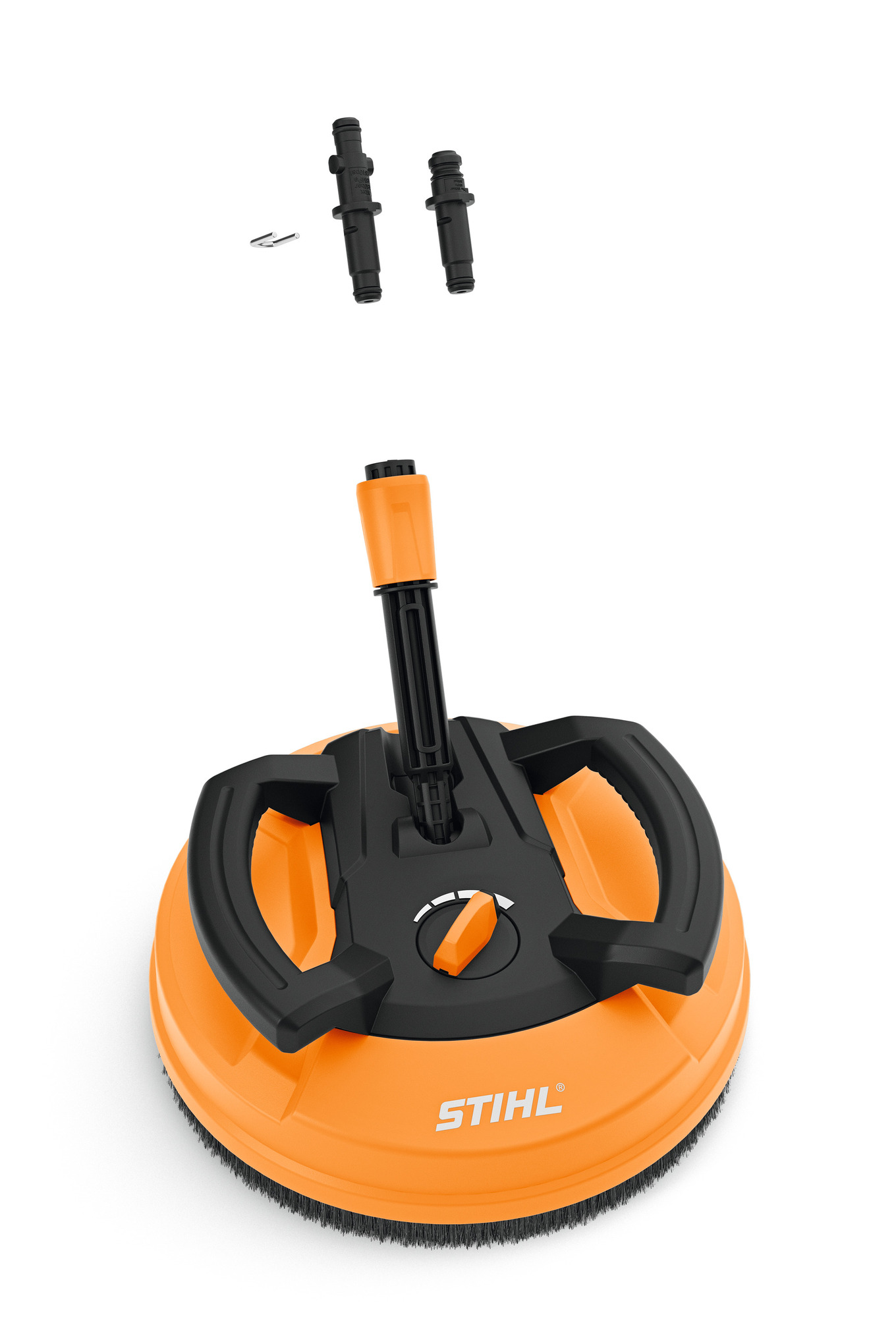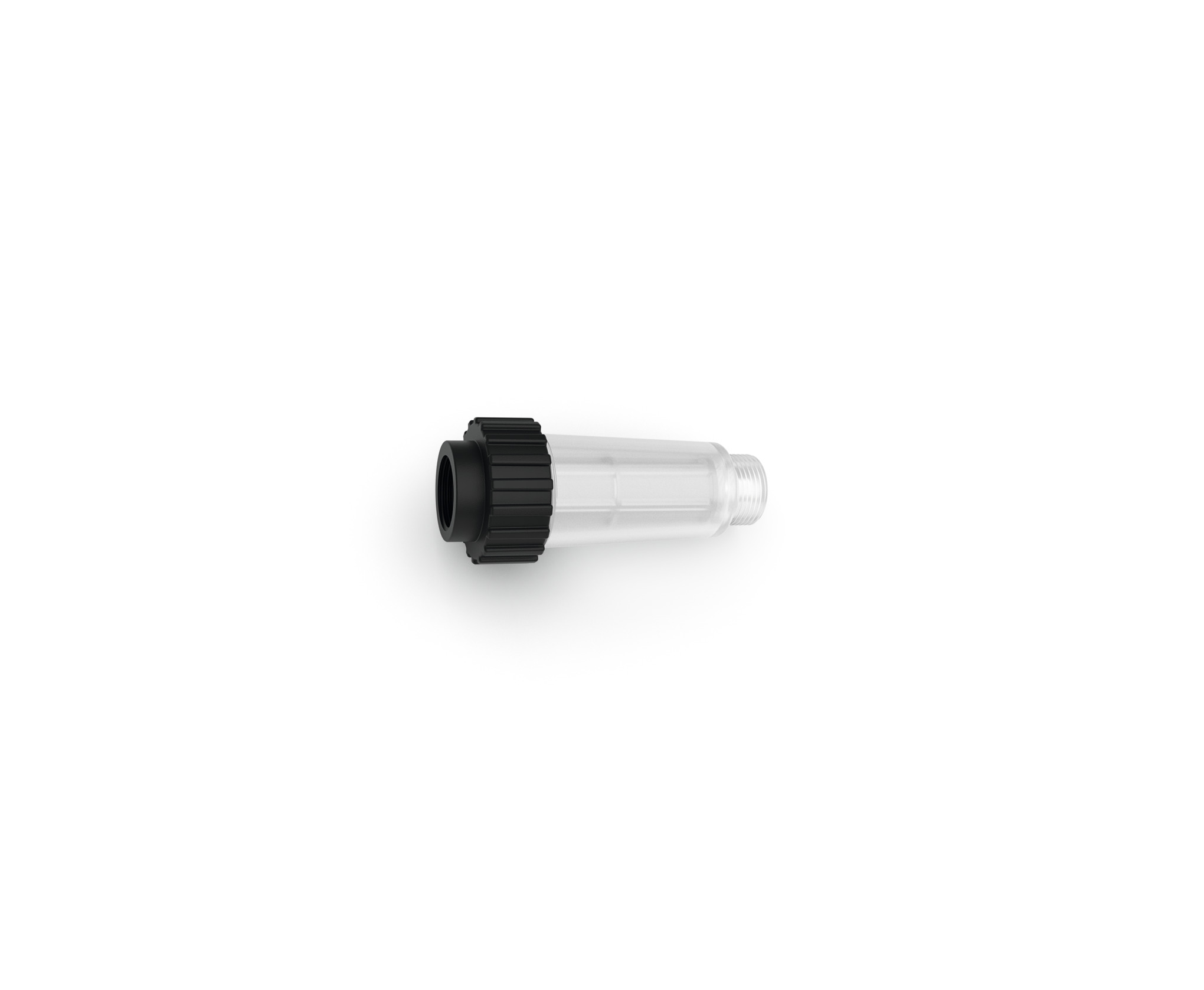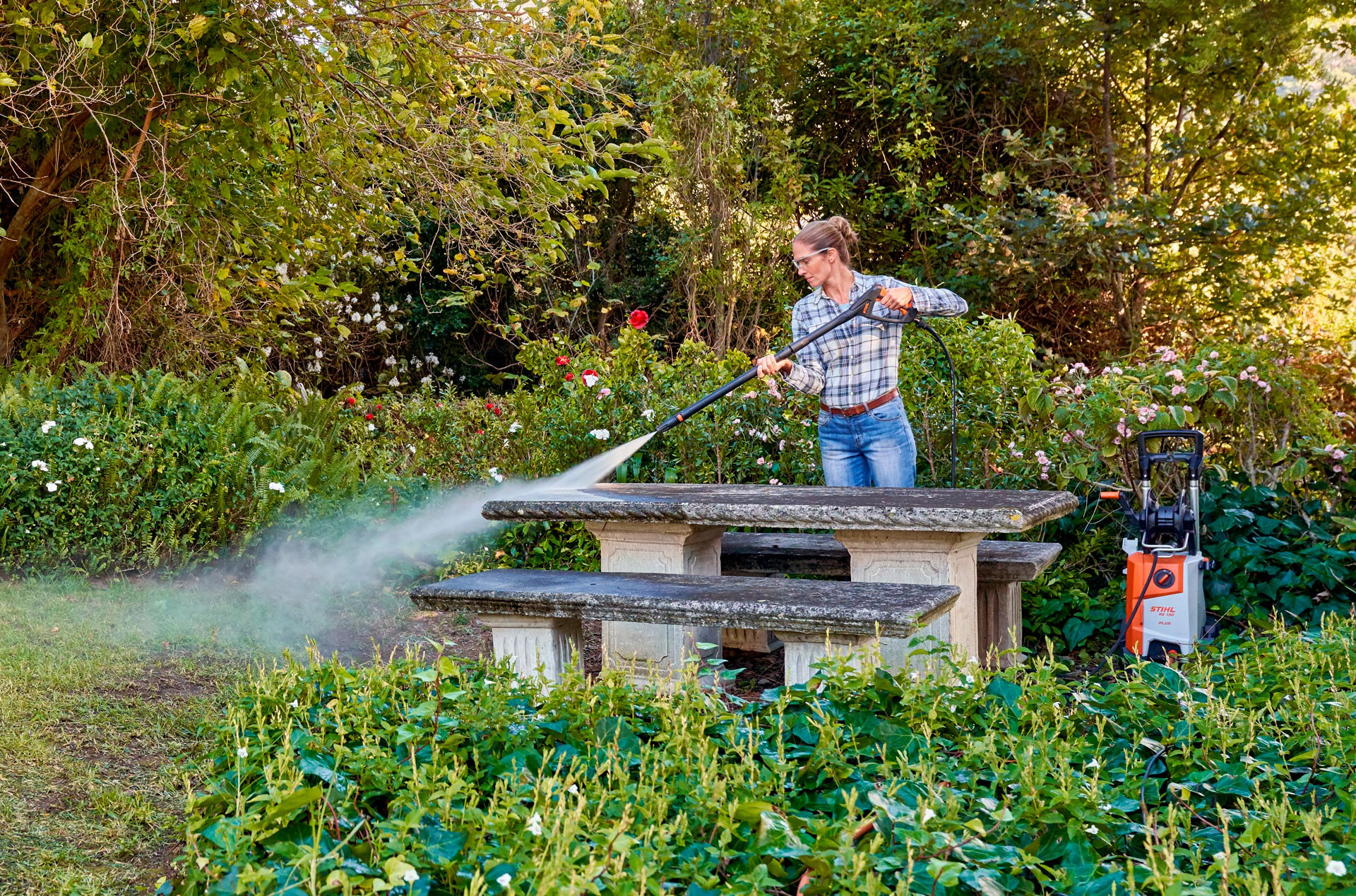Perform pressure washer maintenance and care correctly
Maintenance and winterising tips for STIHL pressure washers
12.07.2023

Overview: pressure washer maintenance
Pressure washer maintenance should be performed regularly after use
Clean clogged nozzles with the nozzle needle included with the power tool
Clean and replace the water filter if necessary
Drain the pressure washer for winterising and storage
The storage location should be frost-free, ideally in a basement or garage

Cleaning the water inlet screen
Regularly check the water inlet screen for dirt build-up. To do so, unscrew the water connection nozzle and pull the water inlet screen out of the water connection. You can now clean the screen under running water, reinsert back into the water connection and then simply screw the nozzle back on by hand.
Cleaning the water filter as needed
We recommend that you use a water filter to protect the pump against dirt from the water inlet, contributing to a longer service life for your pressure washer. To do this, disassemble the filter and clean it under running water. You can then grease the seals with fittings grease and reassemble the water filter.
Winterising pressure washers
The ideal time to winterise your pressure washer is before the first frost. To prevent frost damage to the pressure washer in winter, you should drain it completely shortly after the last use in autumn. To do this, proceed as follows:
If you wish to drain your pressure washer immediately after use, first switch off the power tool, disconnect it from the mains and turn off the water tap. Then operate the high-pressure gun while the pressure washer is switched off. This drains the system so that any remaining pressure is released from the high-pressure hose.
In the second step, remove the garden hose from the pressure washer and, depending on the model, also the high-pressure hose. Then connect the device to the power supply and switch it on for approx. three seconds. A quantity of residual water escapes from the hose connection or from the high-pressure hose. The pump is also drained.
Now all the steps of pressure washer maintenance are complete, so you can store your machine for a longer period of time. Choose a frost-free location, ideally in a basement or garage.

Storing pressure washers correctly

Protecting pressure washers with antifreeze
If your pressure washer cannot be stored in a frost-proof location, you can protect it with a glycol-based antifreeze during winter storage. The anti-freeze prevents water from freezing in the pressure washer and thereby damaging the internal components.
To apply the antifreeze, remove the spray lance and connect the shortest possible water hose to the pressure washer. The shorter the hose, the less antifreeze is required.
Mix the antifreeze according to the instructions for use and fill it into a clean container. Now dip the water hose into this container, and press and hold the lever of the spray gun.
Switch on the pressure washer and press and hold the lever until an even jet comes out of the spray gun. To do this, hold the spray gun in the antifreeze container. Press and release the trigger several times.
Now you can switch off the pressure washer and remove the power plug from the socket. Dismantle the spray gun and water hose and let the remaining antifreeze from the hose run back into the anti-freeze container. You can now store the antifreeze properly or dispose of it in accordance with regulations.
Before storing your pressure washer, check that the nozzles, spray lances and high-pressure hose are in perfect condition. That way you’re ideally equipped for the next task in the Spring. Check for dirt and clean any affected components before storage. And if you find any damage, contact your STIHL dealer directly.




